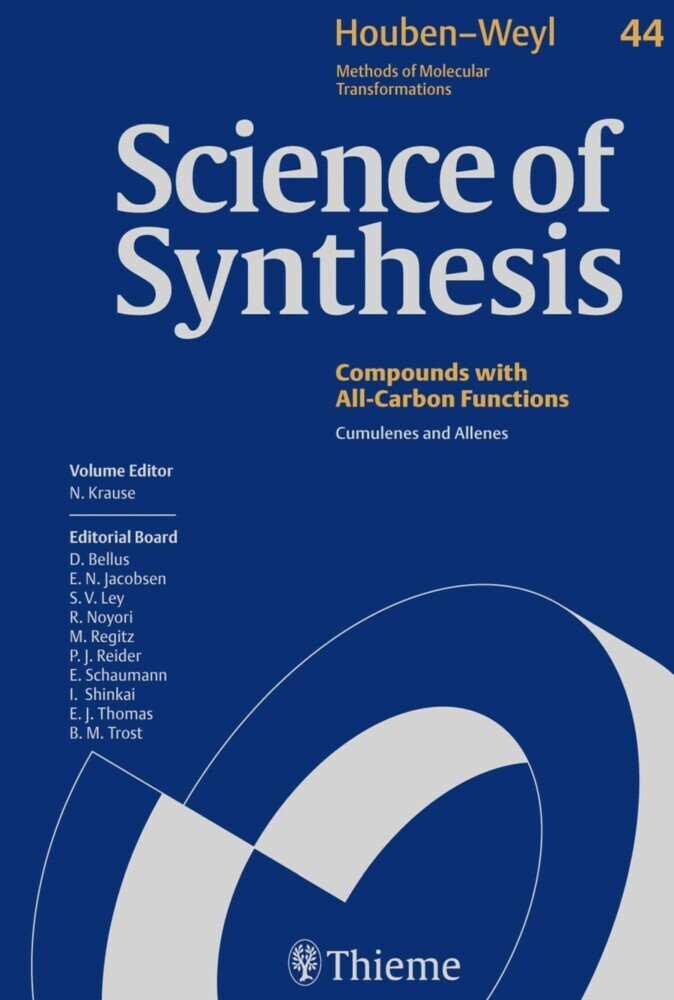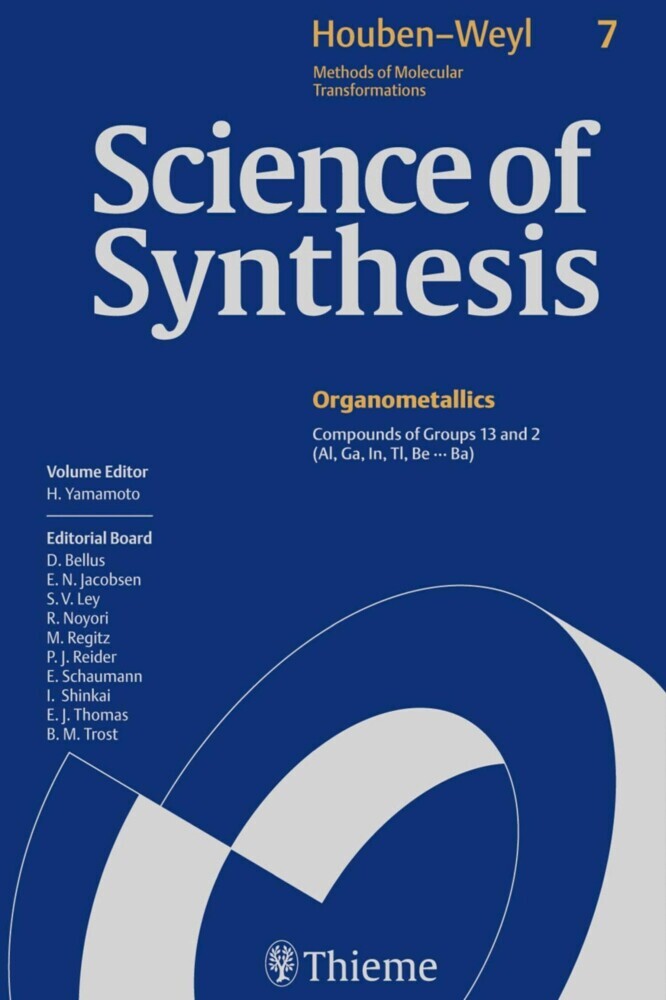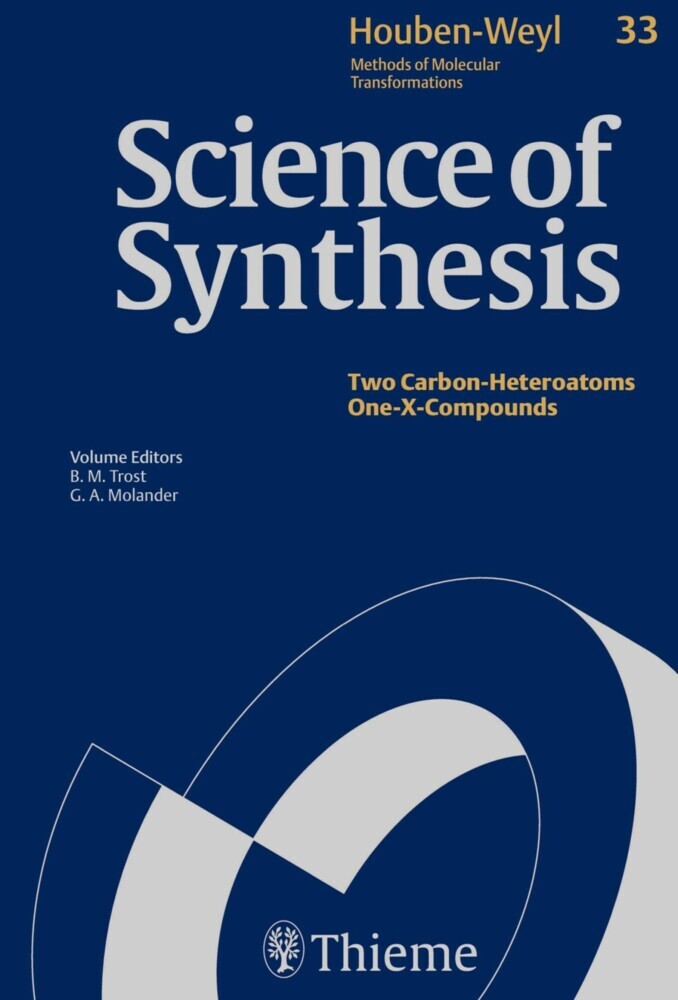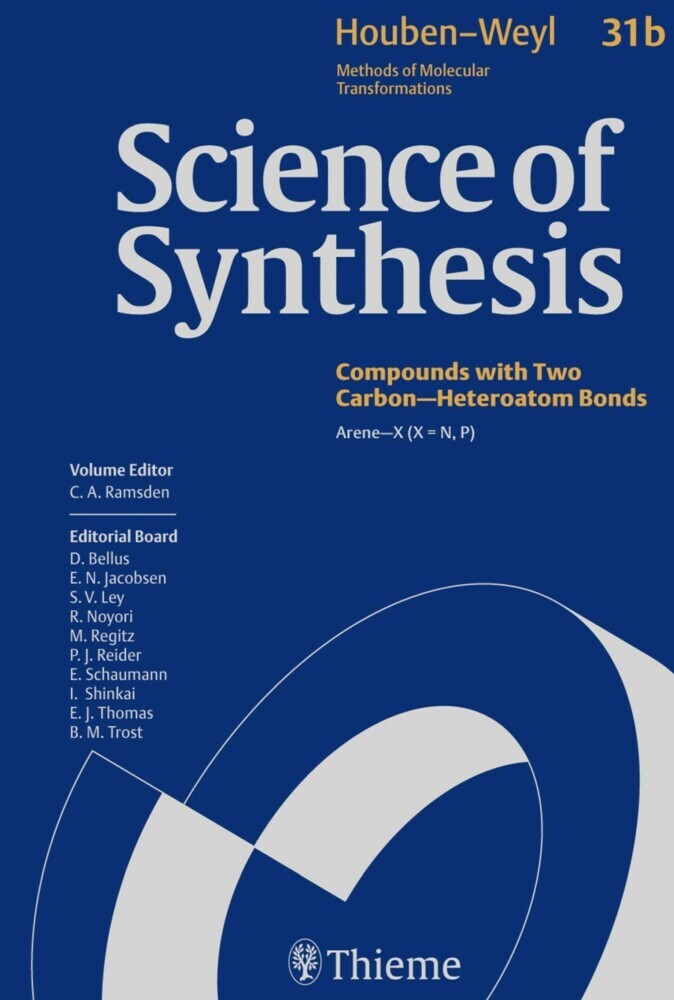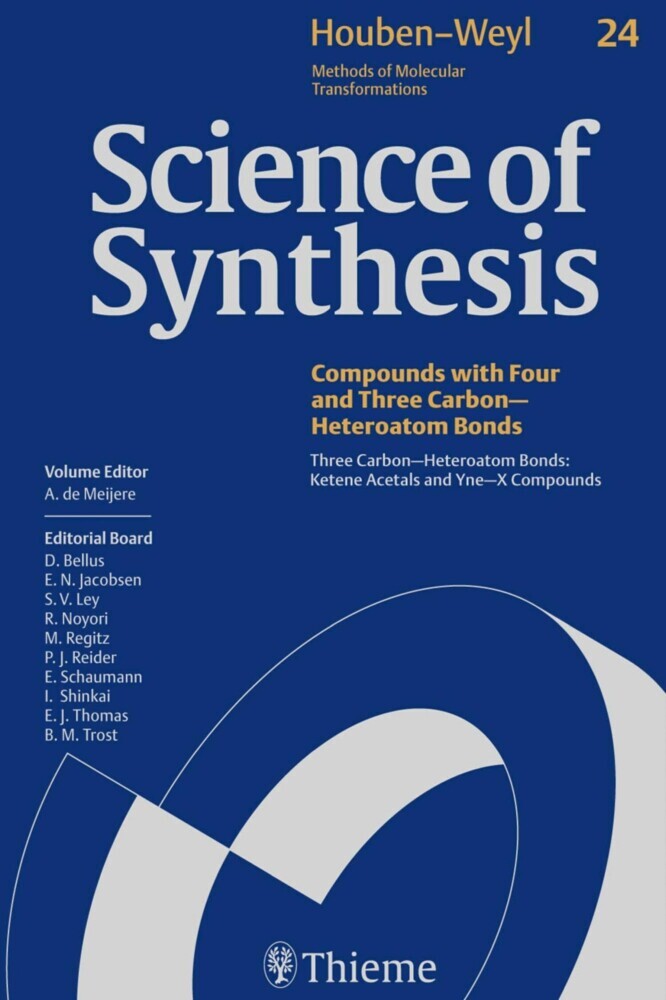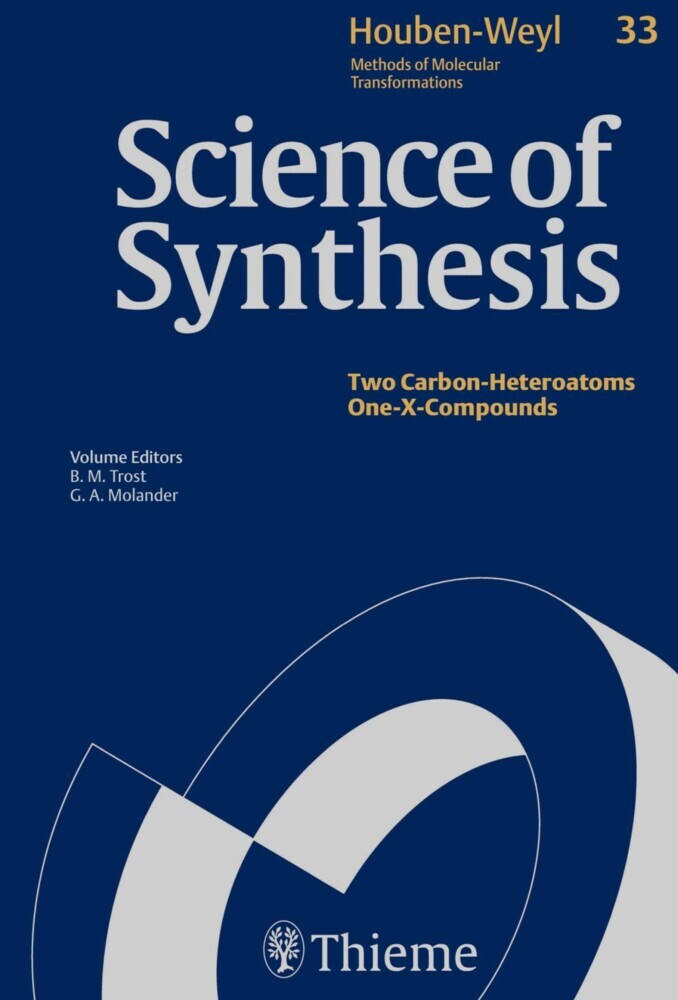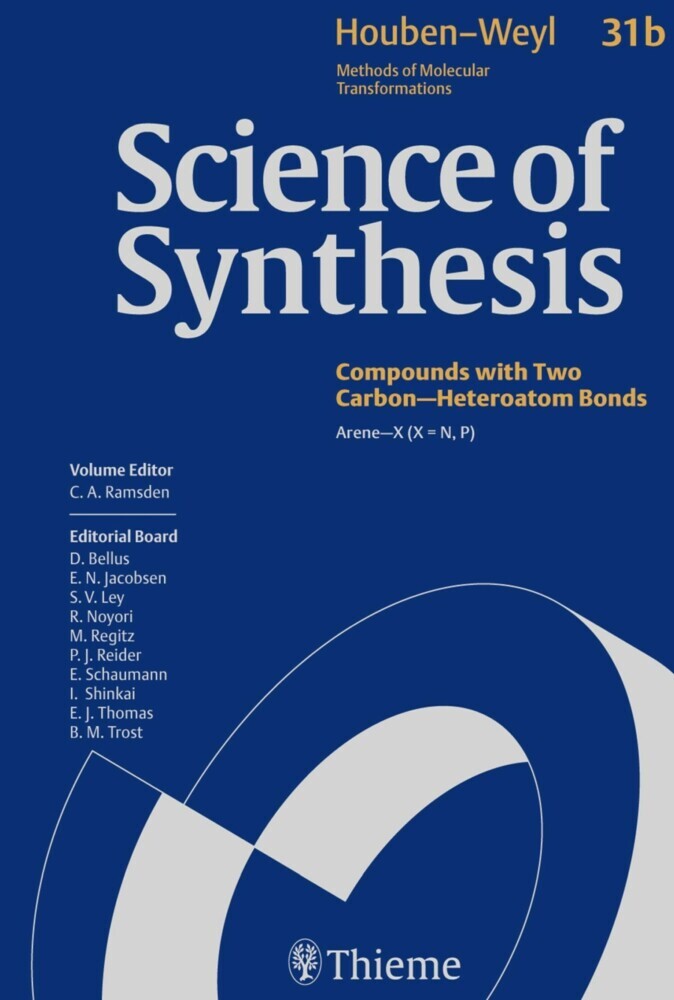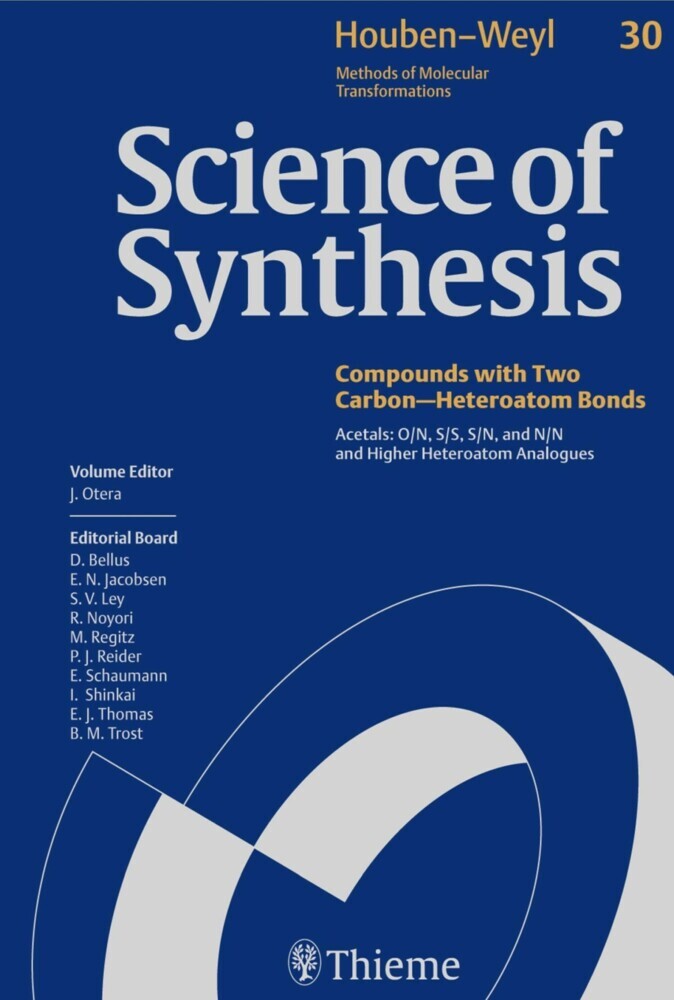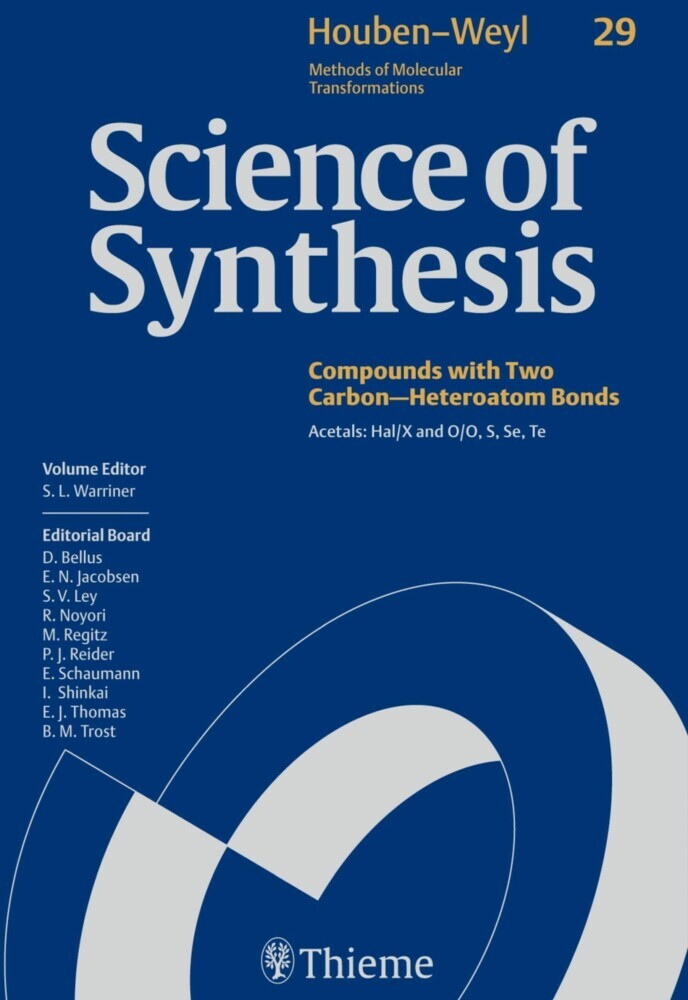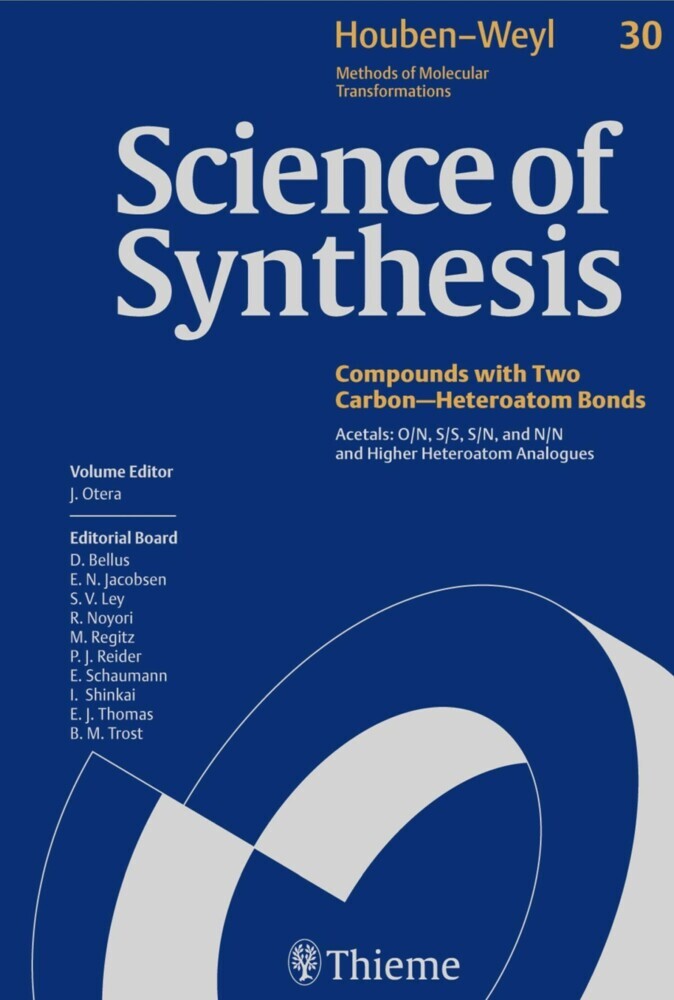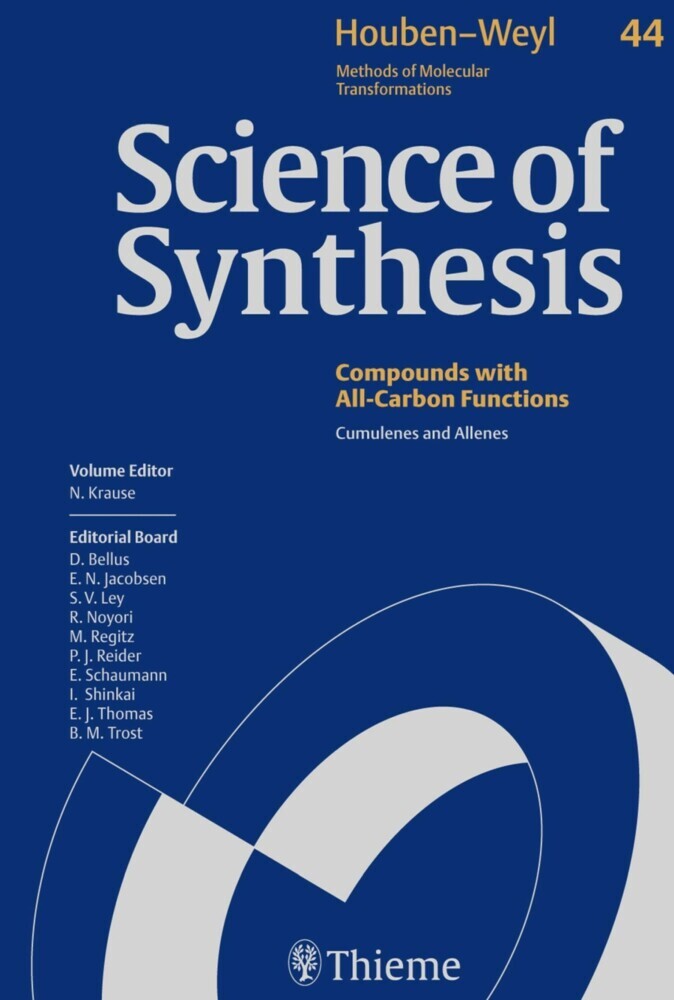Science of Synthesis: Houben-Weyl Methods of Molecular Transformations Vol. 44
Cumulenes and Allenes
Science of Synthesis: Houben-Weyl Methods of Molecular Transformations Vol. 44
Cumulenes and Allenes
Science of Synthesis: Houben-Weyl Methods of Molecular Transformations is the entirely new edition of the acclaimed reference series Houben-Weyl, the standard synthetic chemistry resource since 1909. This new edition is published in English and will comprise 48 volumes published between the years 2000 and 2008.
Science of Synthesis is a quality reference work developed by a highly esteemed editorial board to provide a comprehensive and critical selection of reliable organic and organometallic synthetic methods. This unique resource is designed to be the first point of reference when searching for a synthesis strategy.
- Contains the expertise of presently 400 leading chemists worldwide
- Critically evaluates the preparative applicability and significance of the synthetic methods
- Discusses relevant background information and provides detailed experimental procedures
For full information on the Science of Synthesis series, visit the Science of Synthesis Homepage
1;Science of Synthesis - Volume 44: Cumulenes and Allenes;1 1.1;Title page;3 1.2;Imprint;5 1.3;Preface;6 1.4;Volume Editor's Preface;8 1.5;Overview;10 1.6;Table of Contents;12 1.7;44 Introduction;24 1.7.1;44.1 Product Class 1: Cumulenes;32 1.7.1.1;44.1.1 Product Subclass 1: [6]- and Higher Cumulenes;33 1.7.1.1.1;44.1.1.1 Synthesis of Product Subclass 1;33 1.7.1.1.1.1;44.1.1.1.1 Synthesis by Elimination;33 1.7.1.1.1.1.1;44.1.1.1.1.1 Method 1: Reduction of a,.-Dihydroxypolyynes;33 1.7.1.1.1.1.2;44.1.1.1.1.2 Method 2: Double Elimination of Methanol from 1,7-Dimethoxyhepta-2,4-diynes;34 1.7.1.2;44.1.2 Product Subclass 2: Hexapentaenes ([5]Cumulenes);35 1.7.1.2.1;44.1.2.1 Synthesis of Product Subclass 2;35 1.7.1.2.1.1;44.1.2.1.1 Synthesis by Elimination;35 1.7.1.2.1.1.1;44.1.2.1.1.1 Method 1: Dehydroxylation of Hexa-2,4-diyne-1,6-diols;35 1.7.1.2.1.1.2;44.1.2.1.1.2 Method 2: Debromination of 3,4-Dibromohexa-1,2,4,5-tetraenes;36 1.7.1.2.1.1.3;44.1.2.1.1.3 Method 3: Other Methods Involving Elimination;37 1.7.1.2.1.2;44.1.2.1.2 Synthesis Mediated by Carbene Species;38 1.7.1.2.1.2.1;44.1.2.1.2.1 Method 1: Dimerization of Allenylidene Species;38 1.7.1.2.1.2.1.1;44.1.2.1.2.1.1 Variation 1: Dimerization of Allenylidene Species Generated from Propargylic Precursors;38 1.7.1.2.1.2.1.2;44.1.2.1.2.1.2 Variation 2: Dimerization of Allenylidene Species Generated from Bromoallenes;40 1.7.1.2.1.2.1.3;44.1.2.1.2.1.3 Variation 3: Dimerization of Allenylidene--Chromium Species;40 1.7.1.2.1.2.2;44.1.2.1.2.2 Method 2: Trapping of Hexapentaenylidene Species;40 1.7.1.3;44.1.3 Product Subclass 3: Pentatetraenes ([4]Cumulenes);41 1.7.1.3.1;44.1.3.1 Synthesis of Product Subclass 3;41 1.7.1.3.1.1;44.1.3.1.1 Synthesis by Substitution;41 1.7.1.3.1.1.1;44.1.3.1.1.1 Method 1: Lithiation and Silylation of Hexa-2,4-diynes;41 1.7.1.3.1.1.2;44.1.3.1.1.2 Method 2: SN2. Substitution on Penta-2,4-diynyl Esters;42 1.7.1.3.1.2;44.1.3.1.2 Synthesis by Elimination;43 1.7.1.3.1.2.1;44.1.3.1.2.1 Method 1: Double Dehydrobromination of 2,4-Dibromopenta-1,4-dienes;43 1.7.1.3.1.2.2;44.1.3.1.2.2 Method 2: 1,2- and 1,4-Elimination from 5-Methoxypent-2-yn-1-ols;43 1.7.1.3.1.2.3;44.1.3.1.2.3 Method 3: Oxidation of Hexapentaenes Followed by Carbon Monoxide Elimination;44 1.7.1.3.1.2.4;44.1.3.1.2.4 Method 4: Reductive 1,4-Dechlorination of a 2,5-Dichloropent-1-en-3-yne;45 1.7.1.3.1.2.5;44.1.3.1.2.5 Method 5: 1,1-Dehalogenation and Rearrangement of 1,1-Dihalocyclopropanes;45 1.7.1.3.1.2.6;44.1.3.1.2.6 Method 6: Sulfur Elimination from Penta-1,2,3,4-tetraene Episulfides;46 1.7.1.3.1.2.7;44.1.3.1.2.7 Method 7: Wittig Reaction;47 1.7.1.3.1.2.7.1;44.1.3.1.2.7.1 Variation 1: Wittig Reaction of Carbon Suboxide with Alkylidenephosphoranes;47 1.7.1.3.1.2.7.2;44.1.3.1.2.7.2 Variation 2: Wittig Reaction of Alka-2,3-dienoyl Chlorides with Alkylidenephosphoranes;48 1.7.1.3.1.2.8;44.1.3.1.2.8 Method 8: Retro-Diels--Alder Reaction;48 1.7.1.4;44.1.4 Product Subclass 4: Butatrienes ([3]Cumulenes);49 1.7.1.4.1;44.1.4.1 Synthesis of Product Subclass 4;49 1.7.1.4.1.1;44.1.4.1.1 Synthesis by Substitution;49 1.7.1.4.1.1.1;44.1.4.1.1.1 Method 1: SN2. Substitution on Pent-4-en-2-ynyl Derivatives and Related Reactions;49 1.7.1.4.1.1.1.1;44.1.4.1.1.1.1 Variation 1: On Pent-4-en-2-ynyl Methanesulfinates with Alkylsilver(I) Reagents;49 1.7.1.4.1.1.1.2;44.1.4.1.1.1.2 Variation 2: On 2-(But-3-en-1-ynyl)oxiranes with Alkylsilver(I) Reagents;50 1.7.1.4.1.1.1.3;44.1.4.1.1.1.3 Variation 3: Reduction of Alka-4,5-dien-2-ynols or Related Alcohols by Lithium Aluminum Hydride;50 1.7.1.4.1.1.2;44.1.4.1.1.2 Method 2: SN2' Substitution on 2-Bromo-1-en-3-ynes;51 1.7.1.4.1.1.2.1;44.1.4.1.1.2.1 Variation 1: With Alkylcopper Reagents;51 1.7.1.4.1.1.2.2;44.1.4.1.1.2.2 Variation 2: With Soft Carbon Nucleophiles Catalyzed by a Palladium Complex;52 1.7.1.4.1.1.3;44.1.4.1.1.3 Method 3: Synthesis of Phosphinobutatrienes from 2-Vinyl-1H-phosphirenes and Alkyllithium Reagents;53 1.7.1.4.1.2;4
| ISBN | 9783131722317 |
|---|---|
| Artikelnummer | 9783131722317 |
| Medientyp | E-Book - PDF |
| Copyrightjahr | 2014 |
| Verlag | Georg Thieme Verlag KG |
| Umfang | 531 Seiten |
| Sprache | Englisch |
| Kopierschutz | Digitales Wasserzeichen |

